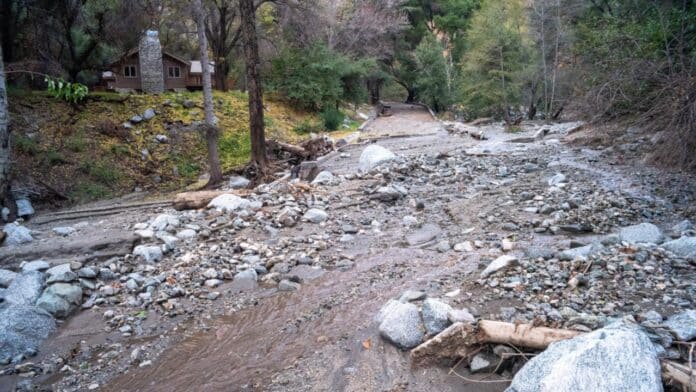Wildfires have a large impact on landscapes by modifying hydrologic and geomorphologic processes. Wildfire frequency and size are predicted to grow as global climate change impacts seasonal temperature and precipitation extremes. These wildfires have the potential to cause floods, debris flows, erosion, and harm water resources. One of the wildfire’s most typical hydrologic effects is an increase in storm streamflow from burned areas compared to unburned areas.
The San Gabriel Mountains was the location of one of the county’s largest wildfires in 2020, which burned more than 115,000 acres, damaged or destroyed more than 150 buildings, and showered ash and smoke on pandemic-weary Angelenos.
There could be more damage caused by the fire’s aftermath, like other “mega-fires” due to climate change. As rainstorms deluge burnt areas, flooding, mudslides, and debris flow can compound the damage. Flooding, mudslides, and debris flows may occur in regions burnt during rainstorms.
Monitoring water runoff and streamflow in burn areas helps authorities predict when and where these post-wildfire events might happen, warning residents early of flash flooding. Loss of vegetation during a fire leaves the soil vulnerable to erosion because the plant roots that hold the soil in place wither.
Scientists have long thought that when leaves burn, their waxy coating forms an organic, oily substance on the soil’s surface, generating a water-repellant layer at or near the surface. This coating stopped the earth from absorbing water, resulting in fast water runoff resembling a mud and debris-carrying Slip’ N Slide.
The researchers investigated three watersheds in Southern California’s San Gabriel Mountains, which drain rainfall and snowfall into streams and rivers. They found that post-wildfire, a significant portion of the water flow in all three watersheds came from water absorbed in the ground. Two watersheds burned during the 2020 Bobcat Fire, and the other was largely unaffected.
The flow of water and debris in the burned area’s stream was four to ten times larger than the flow in the unburned area’s stream, according to Earth scientist Joshua West, who led the study at USC Dornsife. The researchers discovered, however, that trees absorbed the water as expected, preventing it from reaching streams. He didn’t expect rainwater to reach the ground in the burned watersheds. In previous research, scientists believed waxy soils would prevent water from being absorbed in the burnt watershed. This finding contradicted their beliefs.
According to West and Earth Sciences Ph.D. candidate Abra Atwood, increased water in rivers was caused by burned areas because burned trees and vegetation could not retain moisture in their roots as they normally would, rather than the soil’s inability to absorb water.
The conclusion shows that the water-repellant layer does not prevent water from being absorbed into the soil, strengthening the research team’s theory that water in streams is derived from rainfall and groundwater, resulting in enhanced flooding in burned and unburned areas.
Joshua West said.“The underground water accumulation suggests that the potential for landslides extends far beyond the two years following the fire, posing an enduring problem. The abundance of water stored in areas affected by the Bobcat Fire, for example, could serve as a harbinger of future flooding concerns in the years to come.”
The study was funded by USC Dornsife’s Department of Earth Sciences and the National Science Foundation.
Journal Reference:
- Atwood, A., Hille, et al. Importance of subsurface water for hydrological response during storms in a post-wildfire bedrock landscape. Nature Communications. DOI: 10.1038/s41467-023-39095-z
